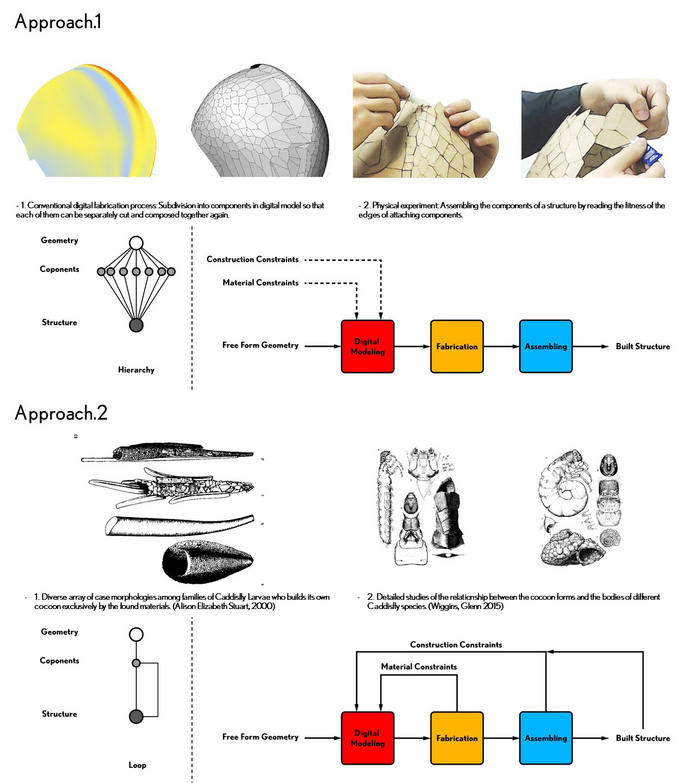Kaicong Wu and Axel Kilian present the research paper "Developing Architectural Geometry Through Robotic Assembly and Material Sensing" at the Rob|Arch 2016 Conference.
Description of the research:
Realizing the advances in robotic fabrication, we want to look for how to extend the robotic potential by including Assembly. What we present at the conference is a “prototypical assembly” method, in which robotic fabrication and assembly are combined in one process. Every component of a structure is recursively designed and constructed by fitting the material into the already built part. But cutting out the irregular shaped components requires carefully positioning the cutout on the material to reduce waste. So sensor-enabled selection of the material is introduced to drive fabrication and assembly. As a further extension of the original motivation, the form of the component is generated by the detected material dimensions introducing a degree of fabrication-awareness in the design geometry. The overall question is how can the combination of robotic assembly, limitations in material selection and the feedback of the in progress construction become the design generator.
Assembling Prototyping from kaicong wu on Vimeo.
Shown in the video, a small scale experimental structure was modeled and partially built from EPS foam sheets. The experiment was setup at the ArchLab of Princeton University, School of Architecture, 2014-2015.
The paper is published in "Robotic Fabrication in Architecture, Art and Design 2016" (ISBN 978-3-319-26376-2).
Please feel free to contact kaicong wu for more insights at kaicongw@princeton.edu.
This research has also been accepted as a 10-min talk presentation to a broad audience at Princeton Research Day on May 5th, 2016.



